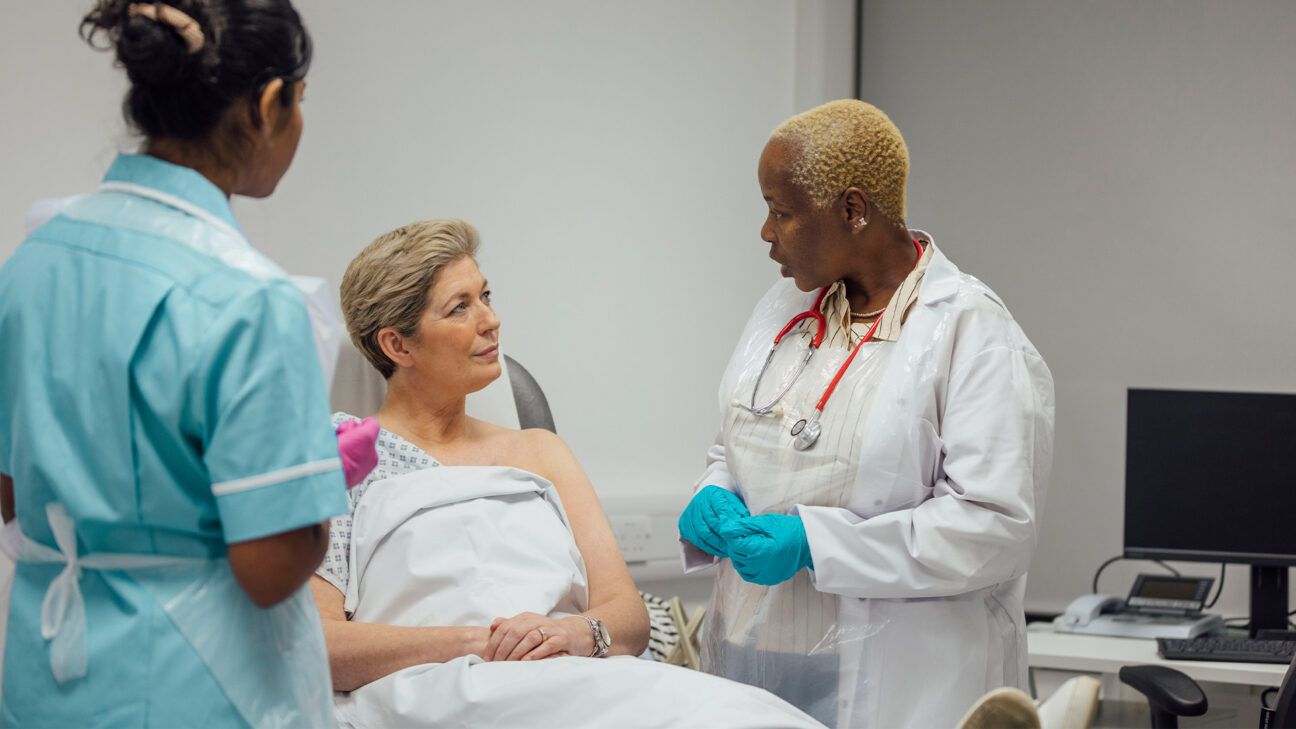 The U.S. Preventative Services Task Force (USPSTF) has finalized new breast cancer screening guidelines for women ages 40 to 74. SolStock/Getty Images
The U.S. Preventative Services Task Force (USPSTF) has finalized new breast cancer screening guidelines for women ages 40 to 74. SolStock/Getty Images- The USPSTF has finalized its breast cancer screening guidance.
- It has lowered the age for screening to the age of 40.
- Screening above the age of 75 is not recommended due to insufficient evidence.
- There is not enough evidence to make recommendations for those with dense breasts.
- The panel states that more work is needed to address racial disparities in outcomes.
According to the U.S. Preventative Services Task Force (USPSTF), the number of breast cancer deaths has been declining over the past 20 years. However, it remains the second leading cause of cancer deaths for American women.
Their new evidence report published online on April 30, 2024, in JAMA, also states that the average age-adjusted mortality rate between 2016 to 2020 was 19.6 per 100,000.
Additionally, it is estimated that around 43,170 people died from the disease in the year 2023.
The report further reveals that most breast cancer cases occur in women aged 55 to 74, but the highest incidence is in women aged 70 to 74.
Non-Hispanic white women experience breast cancer more often, per the report, but Black women tend to die more often than white women. Black women also have lower 5-year survival no matter which type of breast cancer they have or what stage they are in when diagnosed.
Previous reviews by the panel of experts have found that mammography is beneficial in detecting breast cancer, but efforts to assess the relative benefits versus risks for various screening strategies have been ongoing.
After completing its review, the panel has now finalized its guidance on breast cancer screening.
USPSTF’s updated guidance on breast cancer screening
Guidance issued by the USPSTF on April 30, 2024, lowers its recommended breast cancer screening age for all women to age 40 with screenings being repeated every two years up until the age of 74.
Previously, USPSTF guidance stated that those between the ages of 40 and 49 could be screened based on their own preferences and breast cancer risk after consulting with their healthcare provider.
Those with average risk were advised to begin regular screenings at the age of 50.
USPSTF states that this change has the potential to save about 20% more lives.
Their guidance also notes that there is not enough evidence to advise screening in women 75 and older since it is not clear whether the benefits might outweigh the risks.
Additionally, there is not sufficient evidence to recommend supplemental screening for those with dense breasts. While dense breasts can make mammograms less effective for these women, more studies are needed to determine what would work best.
The group further acknowledges the racial disparities in health outcomes for Black versus white women, calling for more research to address them.
Finally, they note that these recommendations apply to all people assigned female at birth, whether they are at average risk, have a family history of breast cancer, or have dense breasts.
They do not, however, apply to those with a history of breast cancer, those at high risk for the disease, or those who have had a lesion on a previous biopsy.
Why the guidelines are important
According to Dr. Matthew Casavant, founder of South Lake OB/GYN in Clermont, Florida, “The new USPSTF breast cancer screening guidelines are pivotal as they adapt to evolving research on the optimal timing and frequency of screenings to balance early detection benefits with potential harms.”
Casavant added that early detection can significantly impact treatment outcomes, providing patients with a better prognosis than they would have if diagnosed at a later stage.
It’s also important for doctors to stay informed about the latest research and recommendations, he explained. This ensures that screenings are both safe and effective.
“We observe through our case studies how adapting to new guidelines helps in minimizing unnecessary procedures, reducing patient anxiety, and focusing resources on patients who are at a higher risk or show symptoms, thus optimizing overall care delivery,” Casavant concluded.
How to reduce your risk of breast cancer
Dr. Daniel Atkinson, GP Clinical Lead at Treated, said one step you can take is to maintain a healthy weight by getting regular exercise and eating a balanced diet.
“If you’re not doing much exercise currently, look into routines for beginners as a place to start,” he suggested. “Try a few 30 minute aerobic sessions each week, and go from there.”
Regarding diet, Atkinson advises eating a mixture of vegetables, fruit, heart-healthy fats, and lean proteins.
“Avoiding processed foods and foods high in sugar, salt and saturated fat can help too,” he added.
It’s also a good idea to stop smoking, Atkinson said. “[D]oing this will reduce your risk of several types of cancer, including breast cancer.”
Cutting back on alcohol consumption can lower your breast cancer risk too.
“Swapping your usual glass of beer or wine for an alcohol-free version or a sugar-free soft drink is a great way of cutting down your weekly alcohol intake,” he said.
Finally, Atkinson pointed out that breastfeeding has been linked to a reduced risk of breast cancer.
“It’s not entirely clear why,” he said, “but it’s a safe approach and should be considered if it’s an option for you.”
Takeaway
The USPSTF has finalized its guidance on breast cancer screenings.
They now advise that people begin regular screenings at the age of 40 rather than 50.
Screenings should be carried out every two years until people reach the age of 75. There is not enough evidence to show that they are safe or effective above this age.
They additionally state that they do not have enough evidence indicating what sort of additional screening procedure would be most effective for those with dense breasts.
The guidance applies to all people assigned female at birth who have average breast cancer risk, those with a family history of breast cancer, and those with dense breasts.
The panel also states that more research should be done to address racial disparities in health outcomes.

 2 weeks ago
14
2 weeks ago
14








 English (US)
English (US)